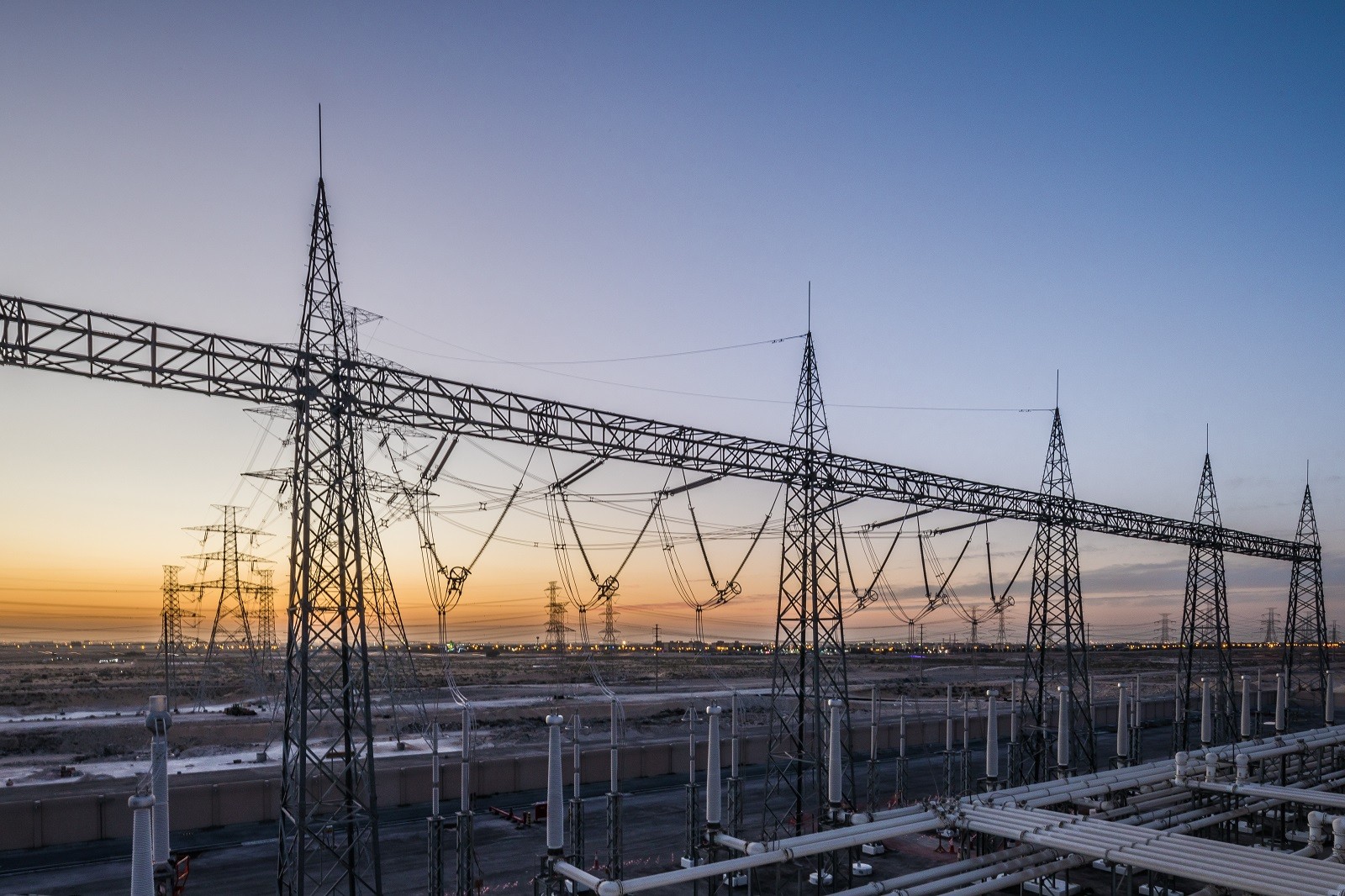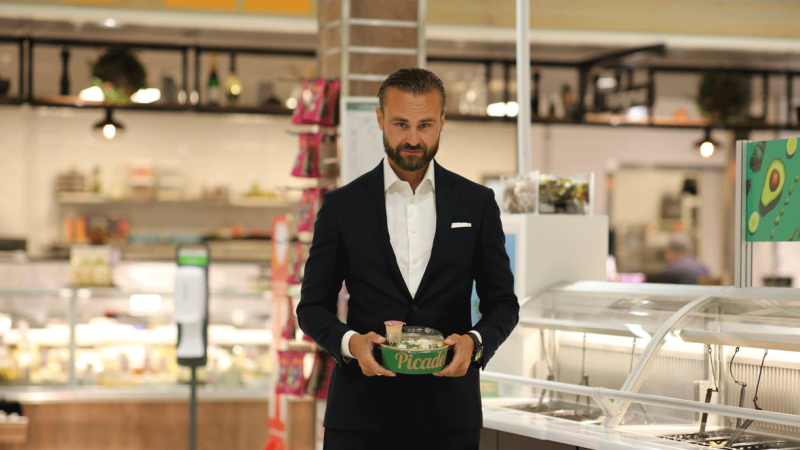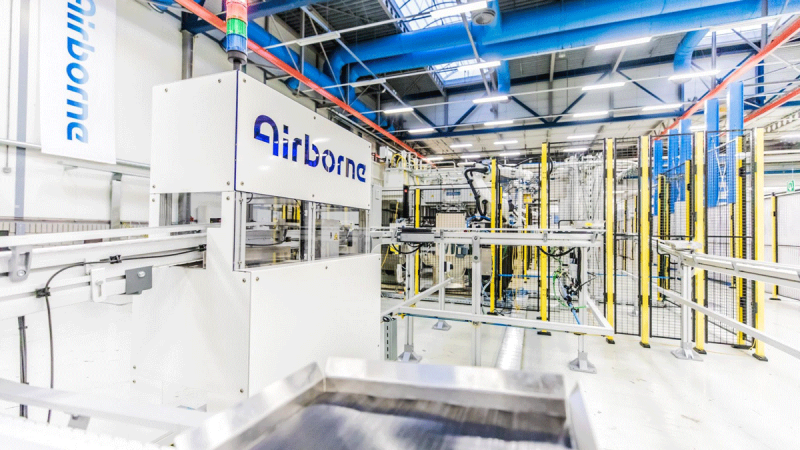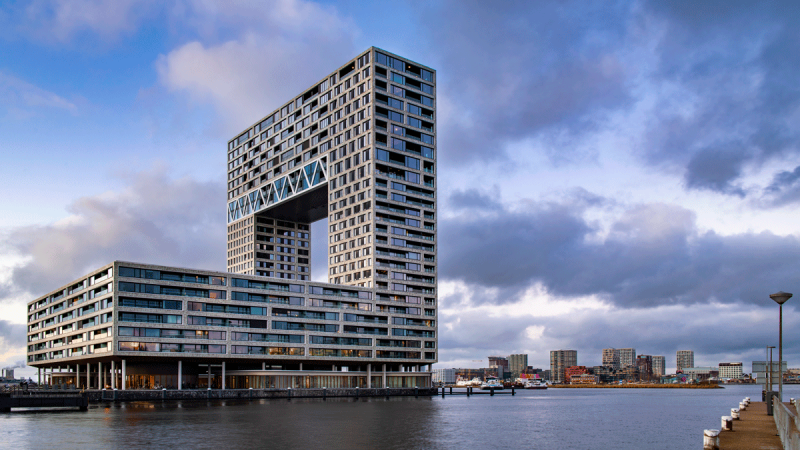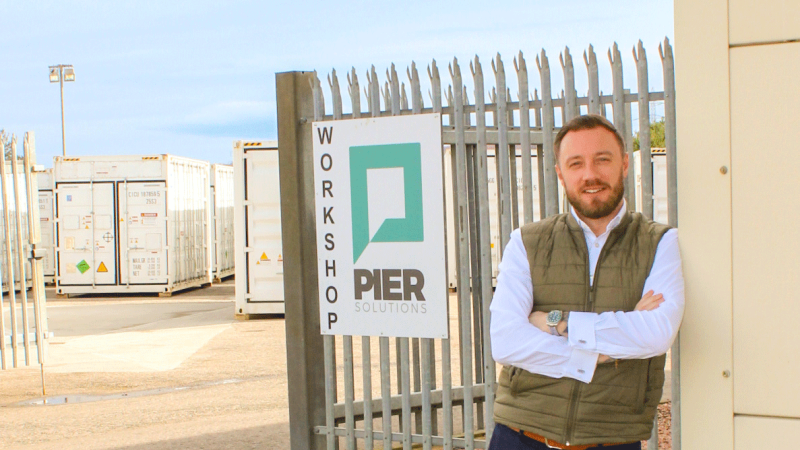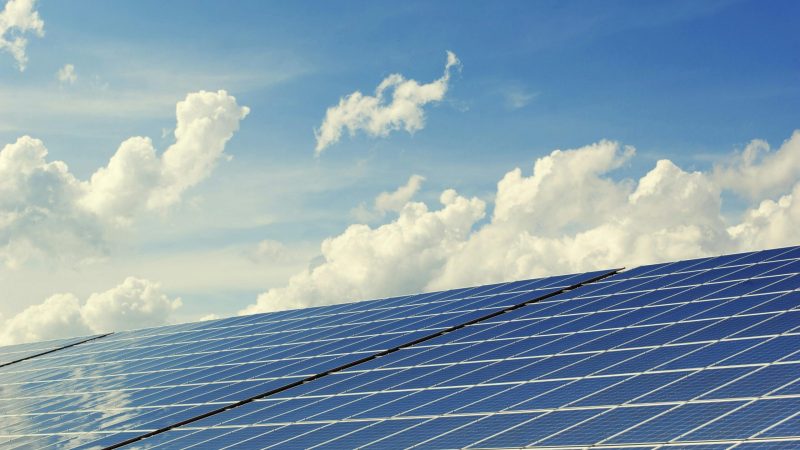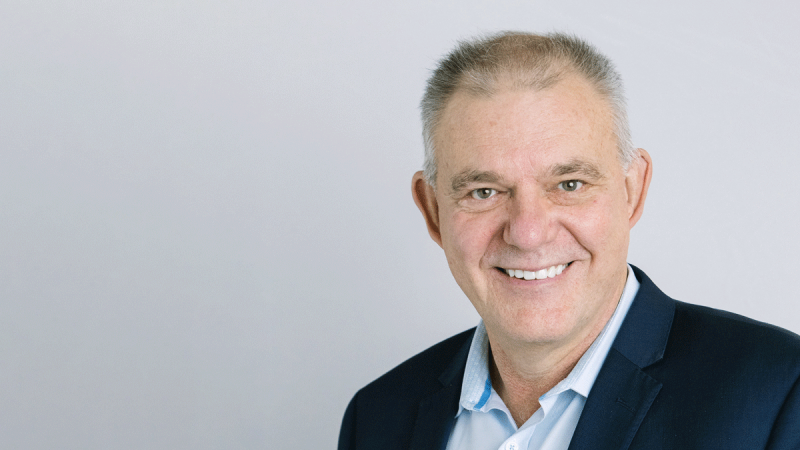The Saudi Electricity Company controls the generation, transmission, and distribution of electric power in Saudi Arabia through 45 power plants across the Kingdom. It is a huge company with an impressive portfolio of subsidiaries, and one of the most crucial of those subsidiaries is the Saudi Electricity Project Development Company (SEPDC). This is the firm responsible for managing construction projects, setting detailed designs, purchasing materials, and implementing projects in the power sector, primarily for the Saudi Electricity Company itself.
Saudi Electricity Project Development Company was established in 2015. Its objective was to handle all the capital electricity projects of the Saudi Electric Company.
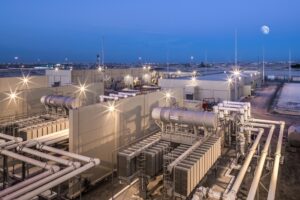 “It is responsible for developing the contracts, procuring the projects, and supervising their construction. This is based on the budget provided by the Saudi Electricity Company,” says Mahdi Al-Dosary, CEO of SEPDC. “Today we are working on a huge number of projects, and the budget for those projects is almost 100 billion Saudi riyals, or over $30 billion.”
“It is responsible for developing the contracts, procuring the projects, and supervising their construction. This is based on the budget provided by the Saudi Electricity Company,” says Mahdi Al-Dosary, CEO of SEPDC. “Today we are working on a huge number of projects, and the budget for those projects is almost 100 billion Saudi riyals, or over $30 billion.”
These projects are conducted with the support of a team of over 500 people, mostly Saudi national engineers, working with business partners including contractors, manufacturers, suppliers, and vendors.
Through these partnerships and its own expert staff, SEPDC has built itself a reputation as a pioneer within the sector.
“We are a pioneer of power projects within Saudi Arabia. We have interconnections with the Saudi Electric Company, managing their projects. Likewise, we have many Saudi-Egyptian interconnections,” Al-Dosary tells us. “I think we are the only company in the region working on this size of project.”
SEPDC can handle projects of this size because its staff are experts in their field, bringing the company a collective 500 years of experience. 40% of them have certification in not just engineering but risk management, or project delivery.
While most of these projects are carried out for the Saudi Electricity Company, SEPDC has also done work for other businesses, nationally and internationally. This includes some projects for organisations such as NEOM.
Building Connections
Speaking with Al-Dosary, it is clear one of his proudest recent achievements is the completion of the Qassim-Madinah Power Interconnection Project in Saudi Arabia. It is part of an ongoing series of large interconnection projects SEPDC is involved in.
“It is the longest of our headline projects for the time being,” Al-Dosary says. “At 420 km, it is the longest direct transmission line for the last three years, but before we execute many of these projects, today we are also working on the 800km line connecting Saudi Arabia and Egypt.”
The Qassim-Madinah Power Interconnection Project is the second line connecting the central and western regions of Saudi Arabia. It also consists of substations in Madinah and Qassim. The project has had 63% of the material it uses sourced from local markets, including overhead lines, stable structures, conductors, and insulators.
“We worked with our contractors to deliver the contract on time, and so that it can carry and support the reliability of the network itself,” says Al-Dosary.
The connection is 420 km long, and like any project on that scale, it has faced some challenges in its construction.
The first of those challenges is that those 420 km of land are divided between several different owners, who must not only be compensated but in some cases located in the first place.
“When we started construction, we faced objections from individuals or government agencies,” Al-Dosary reports. “We have to manage stakeholders and convince the individuals who own the land to work with us. In some of the areas, we needed to cover it is not even clear who the owner is, so we just had to start work and wait for people to come to us. You need a huge number of people to contribute.”
Ironically, to build the connection between Qassim and Madinah, SEPDC needs to build yet more connections with the stakeholders involved.
“We engaged ourselves not only with the people on-site but also had discussions with government agencies to support the project,” Al-Dosary says. “We explained why this project is so necessary for the network and will help make the system stable and continue to provide electricity for customers.”
Ofcourse, for SEPDC to access the land it needed to build this project, it had to pay for the land it used.
“We have to compensate individuals. We crossed their land and try not to harm their land, but to many minds, there is a negative impact,” Al-Dosary admits. “Solving this problem also came to cost the project more, but we manage the situation by working with our contractors to make savings.”
None of these are new challenges for a project like this, but the challenges scale with the size of the project itself. Where things get particularly tricky is with the plots of land that have no obvious owner.
As Al-Dosary points out, “It is something to deal with during construction. Normally these projects cross two areas and sometimes a plot is empty, and nobody knows who the owner is. In cases like that, we will start work and when they come to us, we talk about helping to compensate them, using the engineering and design of the project to reduce costs.”
Linking the Chain
As well as economic and political challenges, the SEPDC also faced more practical issues.
“Some of our raw materials from certain sources faced challenges in the supply chain, especially during the pandemic,” Al-Dosary says. “We managed and continued working on the project, using our experience to overcome technical challenges, especially around raw materials transportation from the source.”
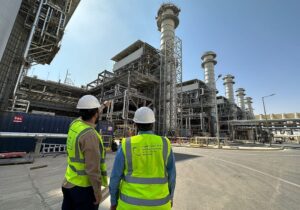 Where possible, SEPDC worked hard to source its raw materials locally, ensuring lower costs, a more reliable supply chain, and a smaller carbon footprint. But wherever raw materials were sourced from, Al-Dosary worked hard to maintain open communication channels between the raw materials suppliers, manufacturers, and contractors.
Where possible, SEPDC worked hard to source its raw materials locally, ensuring lower costs, a more reliable supply chain, and a smaller carbon footprint. But wherever raw materials were sourced from, Al-Dosary worked hard to maintain open communication channels between the raw materials suppliers, manufacturers, and contractors.
“If the raw material is not available, we cannot get the fabricated material on time, so we communicate with suppliers of raw materials, managing the supply chain across our main contractors and suppliers,” Al-Dosary says.
In pursuing these goals, SEPDC has the benefit of being supported by its parent company, the Saudi Electric Company. That, combined with close supplier relationships, puts SEPDC in an advantageous position to do business.
“Of course, because of our relationship with the Saudi Electric Company, and our suppliers, we can work together as a partnership,” says Al-Dosary. “We are not just buyers and sellers, but building continuous partnerships between contractors, manufacturers, and raw material suppliers. We guarantee the value of the quantities to be supplied and promise them we have a lot of projects incoming. With a long relationship and everyone working together, you can really bring people on board. This is the strength of SEPDC. “
That SEPDC has these relationships to fall back on is also a powerful unique selling point when the company does business with organisations beyond its parent company.
“When we present to NEOM, we can show them how we save money because we have long relationships with suppliers and contractors,” Al-Dosary argues. “Once you have this sustainable and stable business with agents, they understand the relationship. We value this and they value us.”
Construction During Lockdown
Of course, the supply chain was only one of the challenges imposed by the peak of the Covid-19 pandemic. But once again, the strong relationships SEPDC fosters and invests in proved to be essential.
“During the pandemic, most of the manufacturers and factories shut down. It was difficult because government regulations meant that we could not move even one step ahead if we didn’t have agreements with the manufacturers and transportation companies in place,” Al-Dosary recalls. “Fortunately, we have that relationship with most of our partners, including transportation agencies. We discussed securing transportation from factory to site and negotiated with the government here in Saudi Arabia to open activities and follow the procedures to avoid infections.”
Even with the best procedures in place, however, sometimes the pandemic would inevitably bring operations to a halt.
“Sometimes we have had to shut down our activities on site due to the pandemic or infections. Because it spread between people working on-site, we were providing all the health tools and medicine necessary to take care of our people,” Al-Dosary says. “We were making sure that everything is clean, trying to avoid any infections from others. We still do inspections before the start of work, preventing any direct contact between people.”
Fighting the Covid-19 virus was a battle that did not just take place at construction sites, however. It was present in every aspect of running the project.
“We even take it into account with the housing,” Al-Dosary recalls. “We have put regulations in place not to have multiple people staying in one room. There were so many challenges during the pandemic, but we overcome all these challenges. We made sure to continue to work on the site, taking care of the safety and health of all of our people.”
As well as keeping them healthy, SEPDC also had to make its people feel safe.
“It is difficult to convince people to work together during the pandemic because people are scared of infection, so we make sure everything is done safely,” Al-Dosary says. “We face many problems but provide for all of our people’s needs. People are the most important asset for the company. Once we knew about the infection, we made taking care of our people and contractors our duty.”
An Environment for Growth
As Al-Dosary is keen to point out, SEPDC’s people, and their accumulated 500 years of experience, are the company’s most important resource. Just like the raw materials used in its projects, sourcing the talent that engineers those projects is something the company takes very seriously.
“We have a system within SEC Group for the recruitment of people. We look for the best,” Al-Dosary tells us. “Once people join us, we have a programme, especially for fresh graduates. Today we are working with all our partners to find and retain the best people for us.”
SEPDC creates an environment within the company to help individuals grow and develop and work hard to find the right path for them. The company has developed & trained many people since it was founded in 2015.
“We also hire through third parties to help us, both in difficult times and times when we are booming and need more capacity than we have,” says Al-Dosary. “Some of the individuals hired through third parties continue to work with us for more than 15 years. We can see that they are satisfied with our services, environment, and compensation.”
Some of these recruits stay with the company, others use what they learn to find positions elsewhere. Either way, Al-Dosary considers it an achievement of SEPDC.
“We’re proud of that because it shows how we continue working and developing and training our people,” he says.
That does not mean SEPDC isn’t keen to keep hold of its people whenever it can, but the most important thing is the company itself.
“Once we spend time and money to develop people, we don’t want them to leave once they become experts. We try to retain them,” says Al-Dosary. “We find some people in different areas or different companies, they join us, and we keep them moving. But at the end of the day, the company itself is moving forward. It’s a matter of branding. People like to work with the SEPDC over working with other firms. People will work with us because we have many projects in different areas across the Kingdom- in the north, east, south, central, and west regions and in between.”
As well as looking after its people, SEPDC also values its contractors and subcontractors, who it considers to be its partners. These are not short relationships, and the company has invested in them for a long time.
“We have long relationships with contracts and sub-contractors. I think most of the contractors which work with us today we have been with for 20 to 25 years,” Al-Dosary tells us. “They provide good service for us, and we have open channels of communication. If we are not talking to them on a daily basis, we are talking to them on a weekly one.”
Open channels of com-munication mean more than Teams meetings and emails. SEPDC will send people out to meet its partners in person, working alongside them to develop requirements, establish constraints and find ways to work around them.
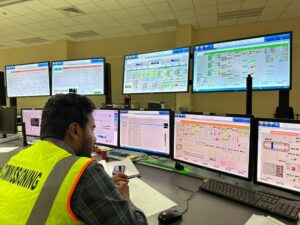 “If you survey our contractors, you will find they prefer to work with us. We have clearer contract terms and conditions, we are understanding about the challenges they face, and we work with them on a continuous basis,” Al-Dosary says. “We are a big company in Saudi Arabia and internationally, which means that ensuring the prequalification of contractors is manageable. We have a good, approved list of contractors and suppliers. We work together with them to develop new, up-to-date technology and ensure our network is up to date.”
“If you survey our contractors, you will find they prefer to work with us. We have clearer contract terms and conditions, we are understanding about the challenges they face, and we work with them on a continuous basis,” Al-Dosary says. “We are a big company in Saudi Arabia and internationally, which means that ensuring the prequalification of contractors is manageable. We have a good, approved list of contractors and suppliers. We work together with them to develop new, up-to-date technology and ensure our network is up to date.”
Indeed, SEPDC has worked with some of the leading companies in the world, including globally recognised names such as Siemens, Global Electric, and Hyundai. The development firm holds quarterly meetings with five or six major manufacturers to discuss common interests, challenges, and ways to resolve them. It also meets contractors every month, not only to discuss existing progress but also to alert them to upcoming projects coming down the pipeline. SEPDC also takes a special interest in another tier down the supply chain, however, maintaining relationships with its suppliers and subcontractors as well.
“We communicate with them and see what their challenges are. We design our contract terms and conditions to support them too, especially Small and Medium Enterprise companies,” says Al-Dosary. “We have open channels to communicate, update our specifications, and talk with them about how to develop and improve the quality of our projects. From a construction point of view, we are supporting them regarding environmental standards and helping them to solve any issues along the way. That is how these relationships have become stronger. We are working together to achieve our targets with a supportive government and parent company. That is why we are in a good position. We are a competitive, transparent, operation.”
Sustainable Execution
SEPDC is not just dedicated to ensuring the progress of its suppliers and contractors. It also takes a special interest in the impact its projects have, and the responsibility it has to the communities that live around them.
“During the execution of our projects, we have the responsibility to develop the communities around us,” Al-Dosary insists. “We just handed over a project on land near the Red Sea. It has included a project to address the impact on the fishers working in that area. We have provided and constructed a mariner for them, to help the community in that region. It gives that community a chance to make a living. We build for net fishing for the sea. We see it as a social responsibility to provide people with the opportunity to work and generate income.”
It is a major priority for the Saudi Electricity Projects Development Company, and the Saudi Electricity Company as a whole, to act on its social responsibility and support the communities it works alongside.
“We are providing services for them, helping individuals and communities through the healthcare sector, especially in areas such as cancer,” Al-Dosary tells us.
That responsibility is also reflected in the company’s commitment to the environment.
“I think that the transition to renewable energy is important, and we need to work in that field,” Al-Dosary explains. “We’re interconnecting all the renewable energy sources in Saudi Arabia. There are more than 20 projects we are working on today where we are connecting the renewable energy fields with the network.”
As well as investing in clean energy, SEPDC is also working to invest in other green causes.
“Our other strategic direction is to not only work for the power project but also water desalination. We have a vast reservoir of experience through our previous projects and can offer it to any developer in the area. We can be engineering and construction management for all sorts of projects,” Al-Dosary says. “This is the time to expand our services. We have huge plans in the pipeline for Saudi Arabia, but we are also trying to limit ourselves to technical projects where we know our skillset is relevant.”
That pipeline stretches a long way into the future.
“For the sustainability of the business, we are expanding ourselves not only for SEC, but also for other customers inside and outside of Saudi Arabia,” Al-Dosary says. “We work in Egypt, helping the EETC to construct a project in any areas covered by our expertise. It is an area where there are no other companies that share our competencies in system solutions. We can provide flexible technology to help with the network during incidents.”
SEPDC’s capabilities let it design, engineer, and supervise projects, using its experience to expand and sell to all utilities in the area.
“We are working with different agencies to be the first choice for EPC, not just for project management,” says Al-Dosary. “Our road map is clear. We are building capabilities across time. We already have appreciation from different agencies and different customers. We have appreciation of the Minister of Energy, from NEOM, and from the national grid working with them. We are working on different technologies. There is no company like us in the region. We are working from power generation to the distribution network, from control centres to substations, diversifying our services and technologies, working together with our customers to serve them in the best way.”
